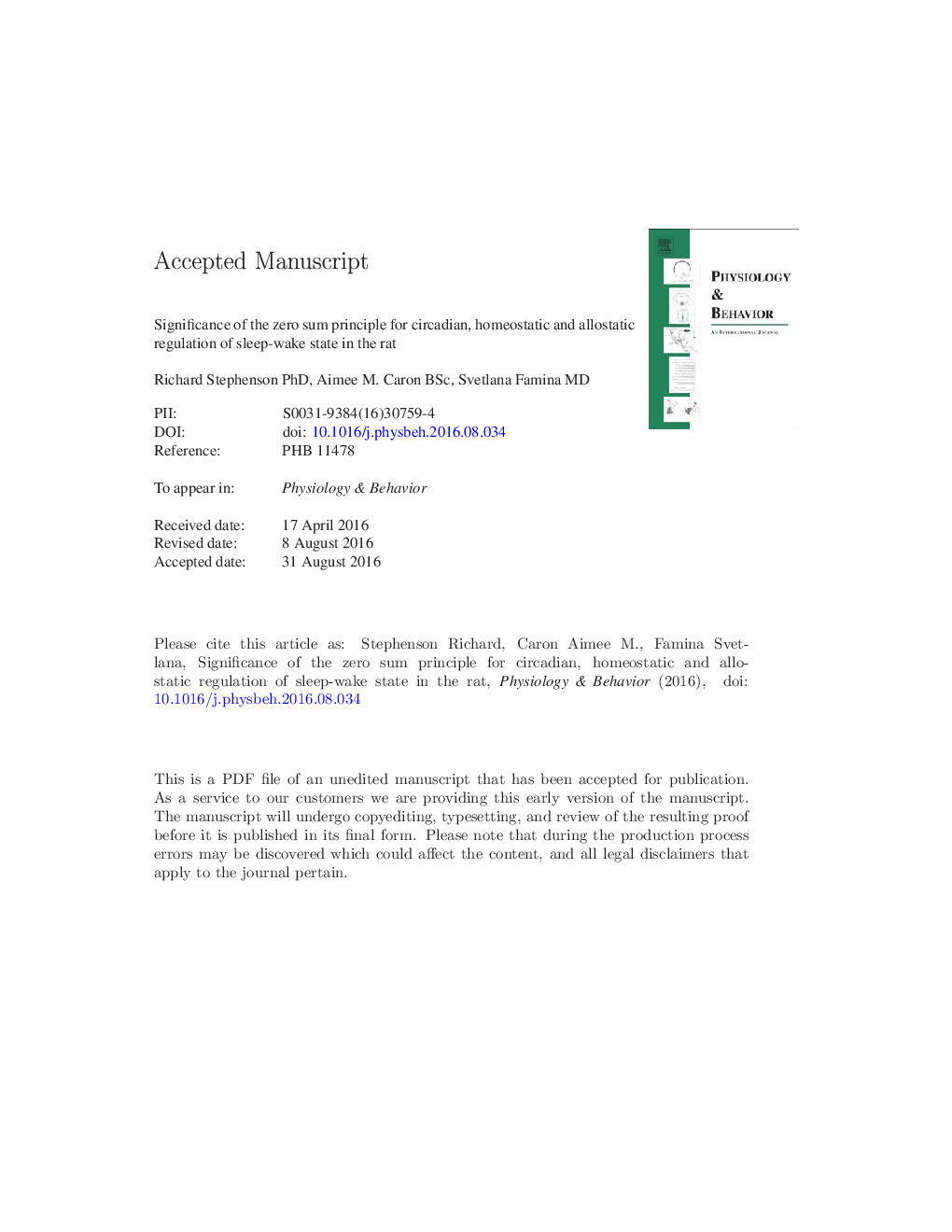| Article ID | Journal | Published Year | Pages | File Type |
|---|---|---|---|---|
| 5922475 | Physiology & Behavior | 2016 | 32 Pages |
Abstract
Sleep-wake behavior exhibits diurnal rhythmicity, rebound responses to acute total sleep deprivation (TSD), and attenuated rebounds following chronic sleep restriction (CSR). We investigated how these long-term patterns of behavior emerge from stochastic short-term dynamics of state transition. Male Sprague-Dawley rats were subjected to TSD (1 day Ã 24 h, N = 9), or CSR (10 days Ã 18 h TSD, N = 7) using a rodent walking-wheel apparatus. One baseline day and one recovery day following TSD and CSR were analyzed. The implications of the zero sum principle were evaluated using a Markov model of sleep-wake state transition. Wake bout duration (a combined function of the probability of wake maintenance and proportional representations of brief and long wake) was a key variable mediating the baseline diurnal rhythms and post-TSD responses of all three states, and the attenuation of the post-CSR rebounds. Post-NREM state transition trajectory was an important factor in REM rebounds. The zero sum constraint ensures that a change in any transition probability always affects bout frequency and cumulative time of at least two, and usually all three, of wakefulness, NREM and REM. Neural mechanisms controlling wake maintenance may play a pivotal role in regulation and dysregulation of all three states.
Related Topics
Life Sciences
Biochemistry, Genetics and Molecular Biology
Physiology
Authors
Richard PhD, Aimee M. BSc, Svetlana MD,
